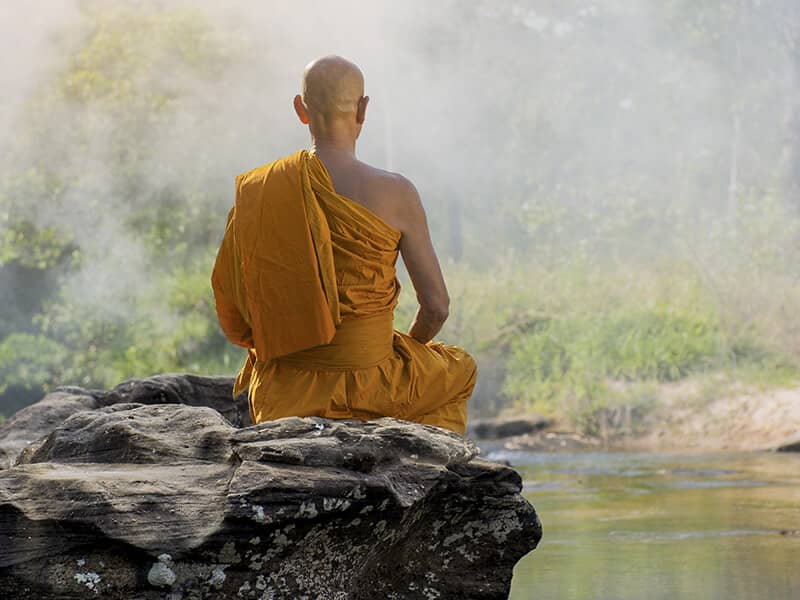The first time I ever did zazen--Zen meditation--was at Tassajara Mountain Center, in the heart of Big Sur country, shortly after its famous founder, Suzuki Roshi, died in 1971. David Chadwick, a student of Suzuki's and his biographer, gave zazen instruction. I was able to sit quite well, but I had definite fear after seeing the kyosaku, the discipline stick.
At morning zazen, the sound of kyosaku pierced the glorious spring air. Quiet footsteps roamed the zendo until suddenly there was a swish, a heart-piercing CRACK, and a swish. Some incredible encounter seemed to be happening in pockets around the room. I could not imagine what would induce someone to place themselves in such a vulnerable circumstance. And yet, here I was on the same kind of cushion, except it was announced that new people would not be hit. I trusted them to keep their promise.
The kyosaku, or keisaku, is a long heavy stick that is used to strike people on the soft muscle of the shoulders to encourage them toward awakening. It represents the bodhisattva Manjushri's sword of wisdom; the means to cut through delusion. When people sit a very long time, their muscles become tired. A strike with the kyosaku can relax and revive the muscles that are fundamental to holding the mudra--the posture of the hands during zazen--and the posture of awareness. It is never a punishment; rather it is that which promotes the practice-experience of awakening.
Hearing the sound of kyosaku for the first time made me doubt the way of zazen. It made Zen seem fierce, extreme, confrontational. And this practice was, for me, the final place. My eggs were all in one basket. I felt I had run out of avenues, and if I didn't find answers here, I saw no other possibilities. I wanted to know what it meant to pass through the gate. Zen had been going on for eons and others--thousands of nuns and monks and laypeople, matriarchs, patriarchs, named and unnamed--had come through this gate. I wanted to know what they knew. I wanted to experience what they experienced.
Shortly after that experience at Tassajara, I met my first teacher, Kobun Chino Otogawa Roshi, who was teaching at Haiku Zendo, a small practice center in a private home in Los Altos, California. I told him immediately that the sound of kyosaku terrified me. I said that I thought the only way to overcome the fear was to experience kyosaku directly. I trusted he would not cause me injury. Would he please show me how kyosaku felt? He agreed and said he would show me during zazen.
Nothing happened. His silence was the point. He was showing me, with compassion and kindness, that the stick itself was empty, that the one holding the stick and the one sitting were both empty. And resonating with buddha-nature. He did not have to use the stick in order to show me its meaning. All my fear vanished.
Slowly, in the silence of the empty, no-striking kyosaku, Kobun Chino's teaching washed through me. Mind-to-mind transmission from teacher to student, the circle of lineage balanced on the shoulders the bodhisattva Manjushri. Here, without words, the mind-to-mind transmission erased all fear and the gate fell away. No basket. No eggs.

